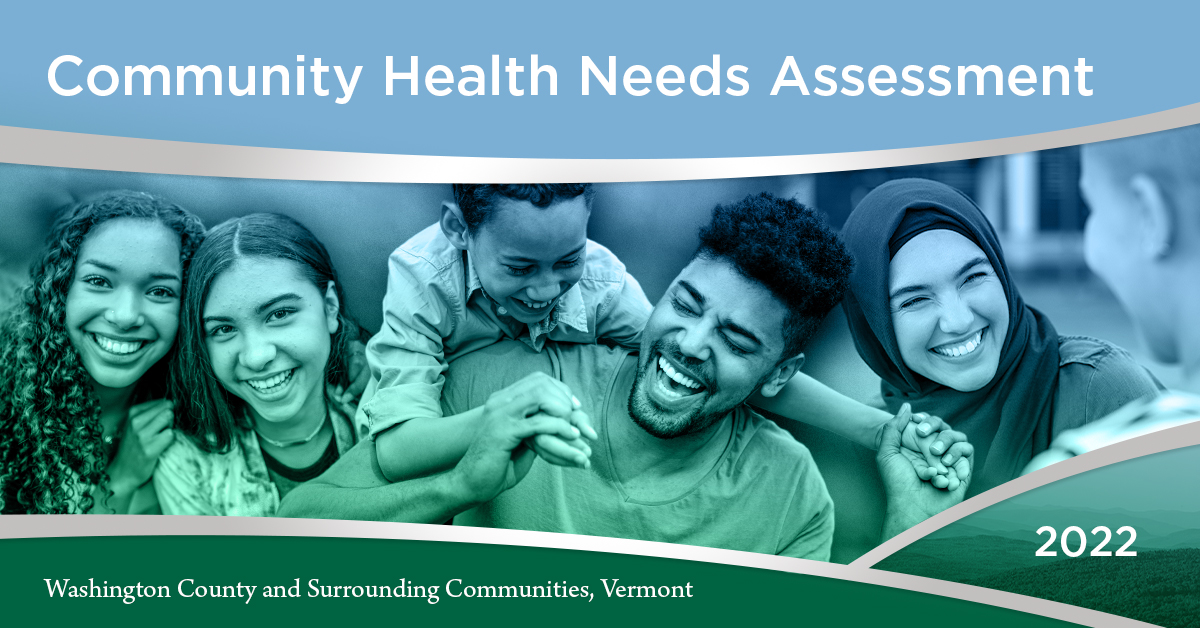Since September, CVMC has been working with more than 50 local organizations to conduct the 2022 Community Health Needs Assessment (CHNA) covering our service area.
Federal legislation requires not-for-profit hospitals like ours to conduct a CHNA once every three years, and to adopt a strategy to help meet the community health needs that the assessment reveals.
CVMC has generated a greater level of participation in its CHNA than most other organizations by emphasizing community involvement as a top objective, says Colleen Milligan, president of Community Research Consulting, the firm that is helping CVMC conduct the assessment. “One of the unique things we see at CVMC is the engagement across so many levels both within and outside the organization,” says Milligan.
Milligan and her team partnered with CVMC in 2019 to conduct that year’s CHNA as well. It helped inform a plan targeting six areas: access to primary and specialty care; access to mental health services and treatment; care for stroke patients; care for patients with heart disease; social influencers of health; and substance use disorders.
Over the next three years, CVMC made substantial progress on several of these fronts; it transformed its ambulatory practice, enhanced its care coordination, telehealth services and mental health screening, and improved access to medication-assisted treatment for patients with opioid use disorder.
The hope is that this year’s CHNA will be just as instructive and once again provide strategic direction for places for improvement. Surveys, focus groups and planning meetings with key stakeholders are all part of the community engagement plan, with the goal of accurately reflecting the views of residents in CVMC’s service area.
Addressing systemic inequities in the health system remains a priority for all involved.
“As we strive to embed diversity, equity and inclusion in everything we do, we’re making a concerted effort to ensure this study captures a broad representation of our community members, particularly those who have been underrepresented and underserved in the past,” says Anna Noonan, CVMC president and chief operating officer.
To make sure the study reflects the range of experiences and perspectives of people who live in the area, CVMC has spearheaded a collaborative approach centered on meaningful engagement with external partners.
As in 2019, CVMC is conducting this year’s CHNA in collaboration with THRIVE, a multi-agency coalition made up of health providers, social service agencies, government, civic and religious entities, and numerous other community partners, dedicated to improving health for the residents of Washington and Northern Orange Counties.
“CVMC really takes it to the next level in embracing that community-based participatory research model, and actively inviting community engagement throughout the process from day one,” says Catherine Birdsey, Milligan’s colleague and research manager at Community Research Consulting.
By taking such a broad approach, the CHNA Steering Committee hopes to better understand how socioeconomic factors continue to impact health outcomes in our service area.
“A person’s health is determined by so much more than risk factors and disease conditions. So in developing our population health strategy, we need to account for the social and economic conditions in which people are making decisions around their health,” says Dr. Nejat Zeyneloglu, CVMC chief medical officer. Such constraints may include access to healthy food, affordable housing, transportation or child care, among others. The pandemic has both exacerbated and complicated these factors, with many people avoiding or delaying care due to COVID-19 concerns.
The CHNA study is designed to help CVMC and its partners acquire a deep understanding of these interconnected dynamics through a variety of quantitative and qualitative research methods.
Thanks to a robust outreach campaign, nearly 1,400 responses were received from the community member survey, with residents offering perspectives on health concerns and barriers to care, along with recommendations and related insights. A series of focus groups will follow in the spring.
The next step will be to develop an implementation plan to guide community health improvement projects over the 2022-2025 reporting cycle.
“It’s a fundamentally proactive approach,” says Birdsey. “Knowing more about what’s going on in the community is going to inform what happens five, 10 years from now."

